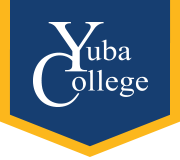The following describes the physical abilities necessary to complete the Radiologic Technology Program at Yuba College. These standards are not conditions of admission to the program. Each applicant for the Radiologic Technology Program however, prior to application, should review these requirements to determine their abilities to successfully fulfill the clinical competency requirements and physical demands of the profession.
The program requires the capability to demonstrate the following physical activities:
- Assist with lifting/moving patients from wheelchairs, stretchers, and beds to the x-ray table and vice versa.
- Lift, carry, and push/pull bulky, heavy equipment.
- Reach overhead to move a ceiling mounted x-ray tube or other equipment.
The program requires the capability to demonstrate the following audible abilities:
- To detect and respond to verbal communication and acoustic signals on medical devices and equipment from a distance of six feet. (corrective devices may be used)
- Communicate, orally and in writing, instructions and directions to/from patients and other healthcare personnel.
The program requires the capability to demonstrate the following manual dexterity and fine motor skills:
- The ability to manipulate equipment, position patients, and handle sterile supplies without compromise.
- The ability to manipulate small knobs or controls on x-ray generators.
- To prepare needles and syringes for injection
The program requires the capability to demonstrate the following visual acuity:
- The ability to determine subtle differences in gradual changes in blacks, grays, and whites for purposes of assessing images for technical quality. (Corrective lenses are permitted)
- The ability to read a requisition for information regarding the requested x-ray.
The program requires the capability to demonstrate the following:
- Rapid, simultaneous mental and muscular coordination; to adapt procedures and techniques of activities to accommodate changing status of a patient’s condition/mobility.
- Ability to apply and wear protective gear for the purpose of universal or standard precautions.
